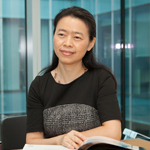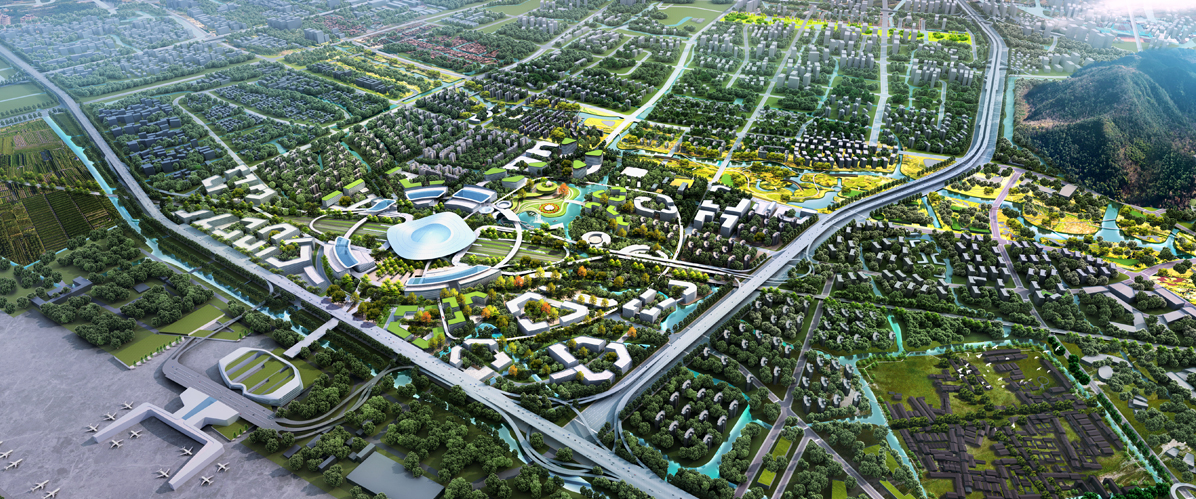31 August 2021
An integrated design approach can create environments that save energy and help hit zero carbon goals, says Chen Hong, Director of Planning of RSP Singapore Studio, and Managing Director of RSP Hangzhou Planning and Design Centre.
- To fight global warming, “regular” cities must transform into net zero carbon cities.
- Design that respects nature, uses renewable energy and promotes personal mobility are ways to facilitate that change.
- Singapore is a great example of a green city. China’s Zhuhai and Wenzhou are also making strides.
Cities are the major battlefield for the world’s fight against global warming. These economic centers of urbanisation, an inevitable result of the desire for jobs, social activities and quality amenities, are complex spaces to navigate before we can achieve the Paris Agreement’s goals for net zero carbon emissions by 2050.
Over half of the world’s people live in cities. And cities, which cover just 3% of Earth, produce over 70% of total carbon emissions – mainly from energy generation, industry, buildings, and transport. One way to keep emissions under control is to upgrade our cities into net zero carbon versions of themselves.
The Singapore example
A net zero carbon city is one designed to save energy, integrate nature, and promote public transport over driving. A good example is Singapore: the compact yet liveable city-state boasts an “urban cell” concept, where each town contains residences, offices and facilities, and are well-connected to the train system.
Singapore’s transport and building sectors implement green standards. Solar panels, green roofs with rainwater collection, sky gardens, vertical greenery, natural ventilation and sunlight shading systems are common across public and private developments, and smart technology is employed for city management, from transport to maintenance.
Major office hubs, like the central business district and One-North, have district-level cooling and heating, centralised waste collection, and an underground logistics system to maximise energy efficiency.
Major changes ahead
To be fair, Singapore is not fully net zero carbon yet. But its efficient public transport system and green emphasis offer a template for other cities.
For example, driving used to be the primary means of transport in China’s Zhuhai, but after RSP initiated an elevated green connector linking parks and major tourist spots to the sea, walking and cycling can now become new modes of commuting.
In another Chinese city, Wenzhou, our proposal for a new city centre in the east region integrated a high-density, mixed-use, transit-oriented development along the high-speed railway station, with a forested waterfront park and elevated driverless service system.
To truly achieve net zero carbon, cities will have to undertake major changes in design practices. For one, they should shift to renewable energy, and adopt end-to-end electrification across building development, operations, and maintenance. The entire carbon lifecycle should be taken into consideration, together with other elements, from physical planning to project implementation and operation, as well as urban image. For example, wind and solar energy is ideal, but requires thoughtful design and installation so as not to disrupt the landscape.
Nature is also critical in better water management and carbon capture. Planting trees and introducing green spaces and connectors are key; in fact, architects can engage sunlight, wind, and rain through passive design to create energy-saving building features.
Developments should emphasise community facilities within a 15-minute walk to promote alternative mobility, and the public transport system should aim to be electric. Now is also the moment to explore smart infrastructure, using digitalisation to achieve maximum system efficiency in areas like energy, water, and gas.
A city for the future
To maximise urban efficiency on a large scale, planners can create a new generation urban cell system that offers work-life balance by using an integrated approach to orchestrate all layers of urban activities.
Though the concept of a net zero carbon city is still new and challenging, it is important to refresh our cities for this new era of climate change. As our technology advances, we can combine new innovations with key design principles to forge a path toward green planning and building design, creating truly healthy cities that suit the times we live in.

Chen Hong, Director, Singapore Studio & Managing Director, Hangzhou Planning and Design Centre
Chen Hong leads the Master Planning and Urban Design division of RSP, bringing more than 28 years of expertise in master planning, urban design, and architectural design.
She believes in master plan and design that respects both the nature and culture while creating long-term value for the whole community. With her experience across many large-scale projects in different parts of Asian countries, she brings fresh perspectives and designs that encapsulates the needs of the users and ecosystem while emphasising the fundamentals of Singapore planning experience.
Previously part of the Hangzhou Qianjiang New CBD Construction & Management Committee of China, she jointly oversaw all planning and urban design works in Hangzhou CBD with a strong focus on the planning research and implementing of vertical pedestrian system to create vibrant public spaces.
Share




